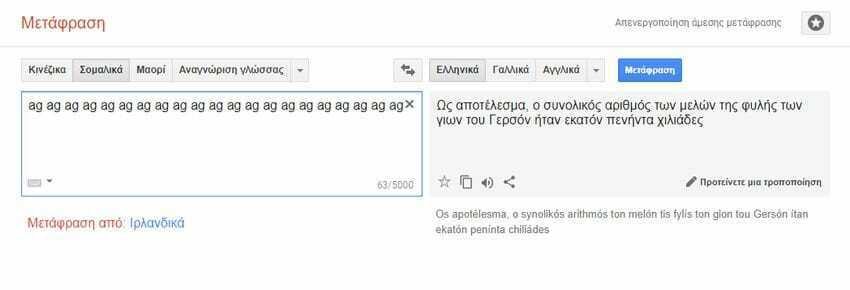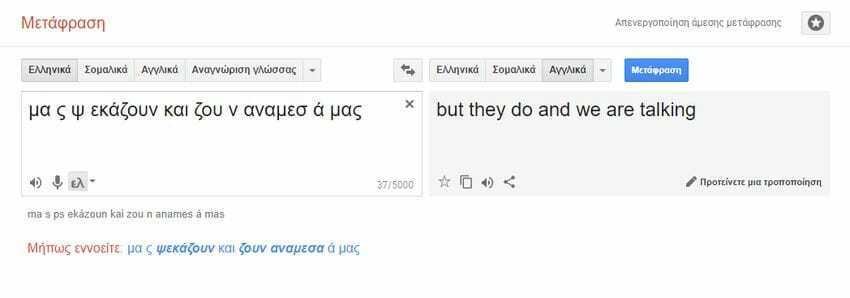Enter the word "dog" in Google Translate 19 times, ask for the silly message to be translated from Maori into Greek and you will find that the translation you get is a distorted religious prophecy.

You will read the message: “The Doomsday clock is three minutes to twelve. We are experiencing characters and dramatic developments in the world, which show that we are getting closer and closer to the final moments and the return of Jesus ".
This is just one of the many strange and sometimes ominous translations that internet users have discovered and reported. In Somali, for example, the continuous spelling of the word "ag" translates into letters about the "sons of Gershon", the "name of the Lord", and references to the people of Israel.




In social media Users have occasionally blamed the weird Google Traslate translations for ghosts and demons or have done various assumptions that its translations draw on Google from texts that exist in emails or private messages.
In response to these criticisms, Justin Buur, a Google spokesperson, says that "Google Translate learns from translation examples on the web and does not use private messages to perform translations, but neither has the system yet access in this kind of content. "All of these are just functions of nonsense that someone enters into the system, resulting in them being created and receiving nonsense."
There are many possible explanations for the strange translations. It is possible, for example, that threatening messages of religious content are the result of disgruntled Google employees, or that some "naughty users" abuse the "Suggest a modification" button, which accepts suggestions for better translations of a given text .

Andrew Rush, an assistant professor at Harvard who studies physical processing languageand electronic translation, he stated that internal quality filters are likely to accept this type of manipulation. It is more likely said Rush, that the strange translations are related to a change that Google Translate made several years ago, when it started using a technique known as “neural mechanical translation".
In neural engineering translation, the system is trained in a language through a large number of texts and corresponding translations into another language to create a translation model between the two. But when fed into nonsense inputs the system can produce strange results.

Sean Colbath, a translation engineer at BBN Technologies, agreed that the strange results were probably due to the Google Translate algorithm looking for order in chaos. He also points out that the languages that produce the strangest results - Somali, Hawaiian and Maori - have smaller translated texts than the most widely spoken languages such as English or Chinese. As a result, he said, it is possible that Google used religious texts such as the Bible, which has been translated into many languages, to educate its model in those languages, resulting in religious content.
Rush, in turn, agreed that if Google uses the Bible to train its model, some of the strange results could be explained. Indeed, many of the strange translations in Somalic resemble specific passages from the Old Testament.
Whatever the reason, there are times when one feels that the algorithm is sending strange spiritual and conspiratorial messages - or that someone is making fun of us.

For example, when Google Trasnlate interprets "we cry and live among us" from Greek to English as, "but they do and we are talking" (but they do and we chat).






Let all those who make fun of Google tell us how many do not use it even indirectly.
I suggest you read Philip K. Dick's "Conservator of Ceramics".